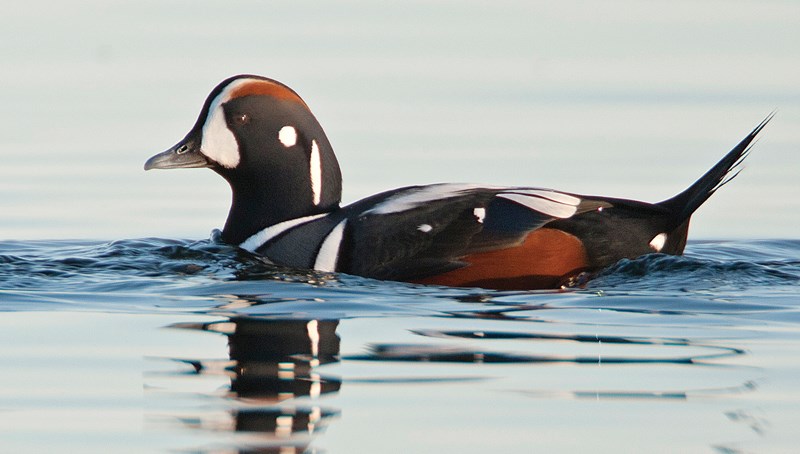Secret? Actually, it really is no secret that salt marshes are some of the most productive habitats for wildlife of all species.
There was a time not so long ago that salt marshes were considered “wastelands” and filled with rubbish of all kinds – a sad affair. One account claims that the depth of trash at Maplewood’s salt marsh was some three metres deep! The good news is that not all of the North Shore’s salt marsh habitats were lost – the Conservation Area at Maplewood Flats thrives – a place of beauty and wonder.
Note too, that the sanctuary has undergone a remarkable rejuvenation due to the work of the Wild Bird Trust of British Columbia. This incudes the creation of freshwater ponds, planting of wildlife-friendly plants, and the placement of bird nesting boxes, like those for the beautiful purple martin. The story of the martin is wonderful. Visit the sanctuary for the annual Return of the Osprey Festival July 23 (8 a.m.-4 p.m.) and July 24 (10:30 a.m.-4 p.m.) to learn more about martins, ospreys and other birds. Walks, talks, displays and much more for people of all ages will be offered.
Maplewood’s salt marsh, like all such habitats, is home to a marvelous diversity of plant and animal life – indeed a rich diversity. Plants growing here are adapted to growing in “pickle juice” conditions: such plants are called halophytes. They include sea asparagus (salt water pickle), orach (sea spinach), goose tongue (a plantain) and arrow grass (actually not a grass, just sort of looks like one). Orange-coloured strings that criss-cross the marsh are a parasitic plant called dodder. Dodder here at Maplewood is parasitic on the sea asparagus (Salicornia).
Visitors are not allowed into the salt marsh except in July on a special guided field trip. This is due to the sensitive nature of the plant life and the creatures that live there.
There are trailside viewing areas where one can get excellent views of the salt marsh – both up and down. You can watch as ocean breezes cause plants like rushes and grasses to dance and sway, and marvel at the golden blooms of gumweed that populate the marsh. It is called gumweed (I wish they could come up with a better name for the beautiful plant!) because the flower heads are sticky. Tall celery-like plants with umbrella-like flower heads (umbels) are known as sea watch or angelica. This is a vital food for the locally rare anise swallowtail butterfly. Its caterpillars feed on plants of the celery family like angelica and cow parsnip (not to be confused with hogweed).
Work is being done at the Conservation Area at Maplewood Flats by Richard Beard, co-founder of the Wild Bird Trust of B.C. and a lepidoptera (butterfly and moths) expert, to restore the butterfly habitat so it will once again grace the North Shore with its beauty – indeed magic. You will be able to find out more about this project at our July guided walk to the salt marsh.
Bird sightings at the salt marsh have been nothing short of remarkable. For example, we’ve had the joy of seeing Western and Eastern kingbirds and the mountain bluebird. In summer, swallows and purple martins swoop in to feed on abundant insects – and maybe you will see a swift or two. Nearby woods (bordering the marsh) have produced a fine list of raptors including bald eagle, red-tailed hawk, northern harrier, merlin and peregrine falcon, and turkey vulture – it is quite amazing.
The marine habitat is where waterfowl like the beautiful harlequin duck is sometimes seen. But there are also mergansers (maybe a mother with her brood (lovely) and depending on the season various dabbling and diving ducks like goldeneyes, bufflehead, pintail, teal and wigeon. When the tide recedes exposing gravel bars, you might be lucky to see a beautiful black oystercatcher with its bright orange bill, like a carrot.
Shells on the sand include bivalves like the basket cockle, purple varnish clam, and little neck clam, which speak to the salt marsh’s biodiversity. And there are numerous smaller forms of life from snails to micro organisms. All have a role in the food chain and all are somehow connected.
Sea weeds of various species are fun to identify. Look for bladder wrack, sea lettuce and “Turkish towel.” Sea lettuce looks just like lettuce leaves and is an important food of ducks like mallards, teal and wigeon.
Time spent at the salt marsh will reward you with many wonderful sightings no matter what the weather or season. Think how wonderful it is to watch a mother deer and her fawn slowly wandering through the marsh, nibbling on a tender leaf here and there. These are moments to remember and treasure. That is Maplewood’s salt marsh. And don’t forget to visit the bird feeding station provided by Wild Birds Unlimited – morning is best to see a better variety of birds).
Keep safe and cheers.
Al Grass is a naturalist with Wild Bird Trust of British Columbia, which offers free walks at The Conservation Area at Maplewood Flats on the second Saturday of every month. The next walk will be Saturday, July 9, starting at 10 a.m. seeing participants learn about the secrets of the salt marsh at the Conservation Area at Maplewood Flats.
Meet at WBT’s site office, 2645 Dollarton Hwy., North Vancouver. Walks go rain or shine. wildbirdtrust.org



